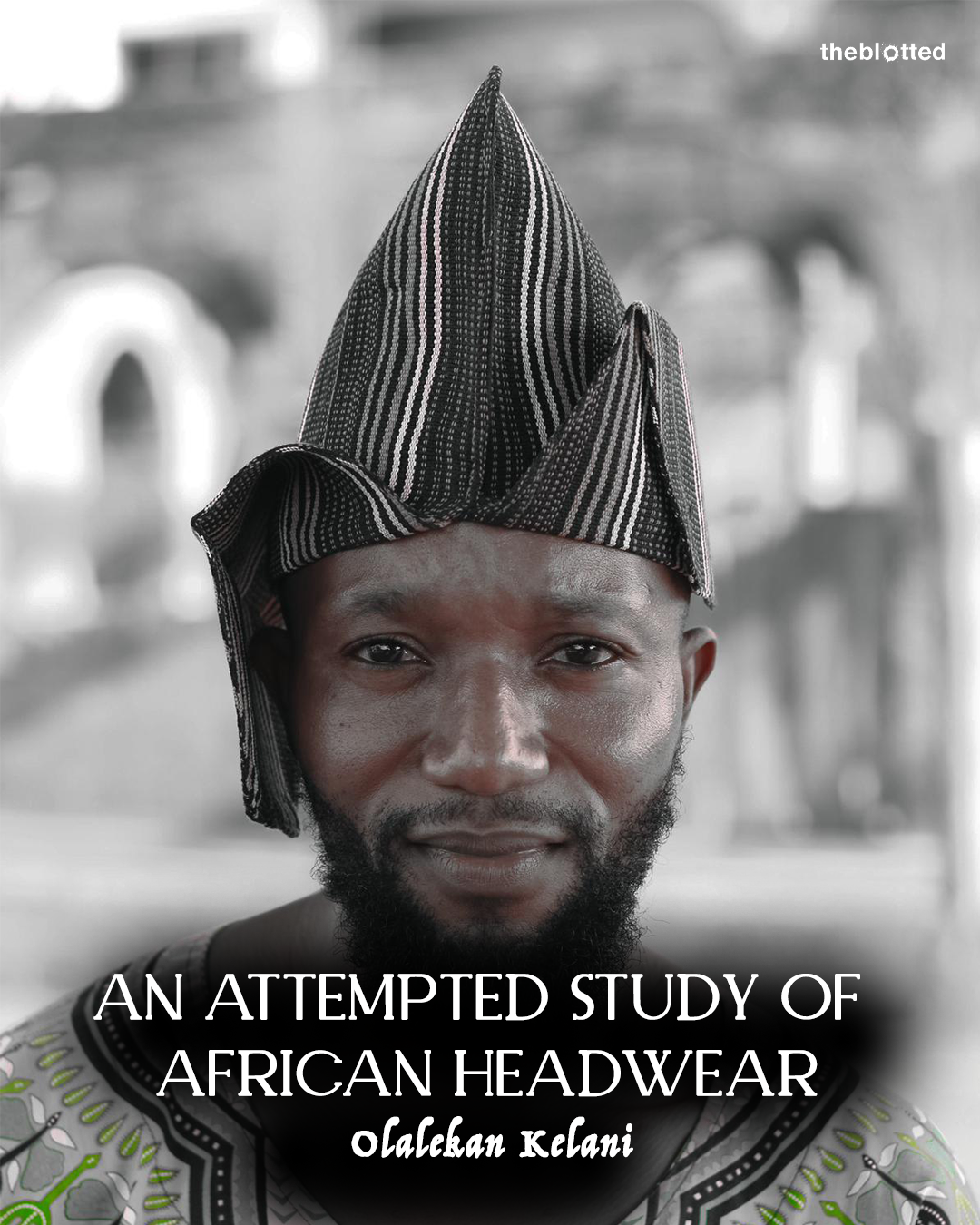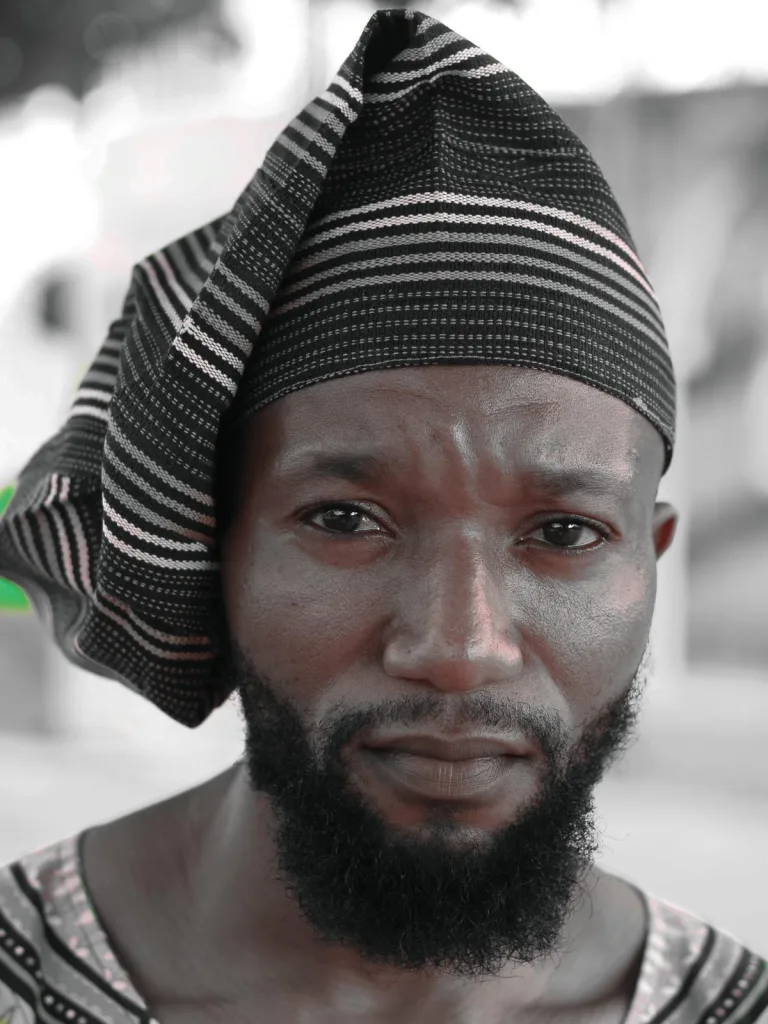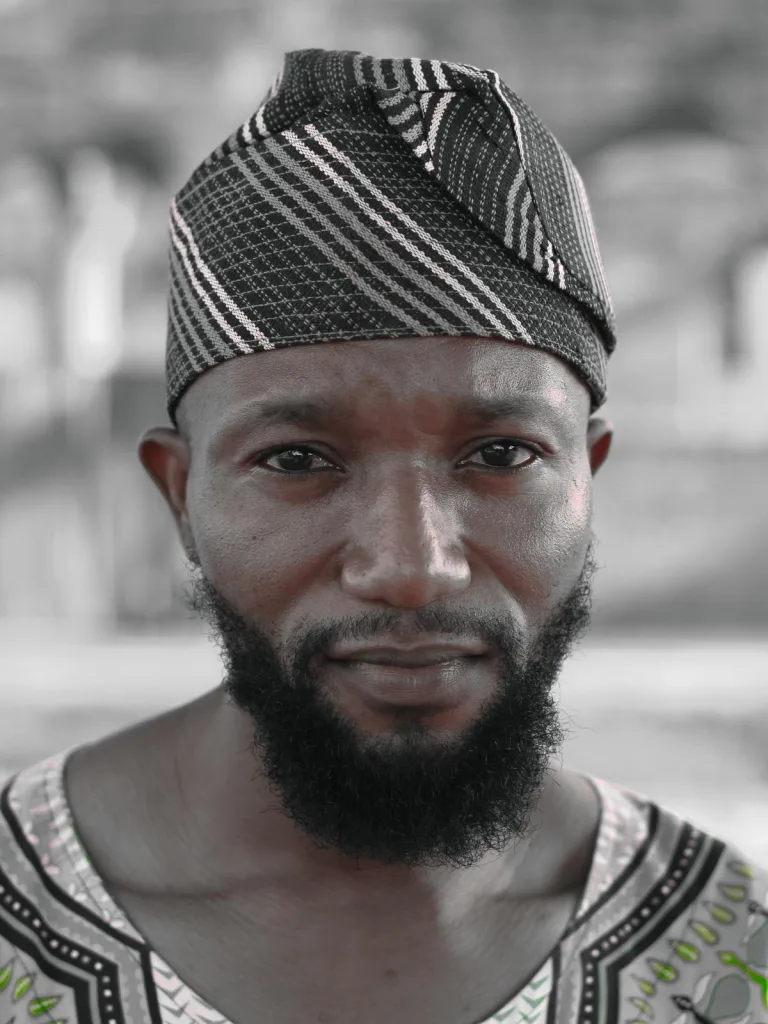Olalekan Kelani’s Fila Abinibi Attempts to Explore Cultural Headwear

Olalekan Kelani’s Fila Abinibi photography project studies headwear as an important part of human dressing, and how much sway it holds in general perception of the wearer. Similar to using a part to extrapolate the whole, this project uses Yoruba attires as a point of contact, showcasing the Gobi cap, Abeti Aja cap, and Buga cap all on a single subject. This visual exercise results in a change in perspective under different hats, highlighting how singular pieces of clothing have been used to distinguish individuals within different strata of society.
The University of Michigan during a study of headwear once published that “…the hat represents authority and power. Because it covers the head, the hat contains thought; therefore, if it is changed, an opinion is changed. The covered head shows nobility, and different hats signify different orders within the social hierarchy.” This has roots in numerous cultures, 19th century western fashion dictated that top hats would identify the upper class, bowler hats would be worn by the working class and the ladies would wear Gainsborough chapeaus to show their status.
Before then, and in a different part of the world, islamic-influenced practitioners will wear the Kufi which is now considered a pan-religious clothing of identity, used by christians and animists as well. It could mean reverence, and in other places portray modesty and is also worn when their people mourn. The hat sometimes says more than words ever can. On battlefields, it is the helmet one wears that separates neighboring clans from one another. Even a King is affirmed with his crown, a headwear.
What Olalekan Kelani did with the Fila Abinibi project reinforces this ‘Hat as determinant’ mindset. Olalekan picks out three hats, Gobi cap, which represents royalty and regaleness, in his words, the artist said “I captured the Gobi’s meticulous embroidery, reflecting the elaborate craftsmanship of Yoruba artisans. The vibrant colors and detailed geometric motifs speak to the cultural richness and deep historical roots of the Yoruba people.” He does the same for Abeti Aja which is worn by the common man in Yoruba land “the rich fabric and bold patterns emphasize its status as both a daily accessory and a ceremonial piece. The Abeti-aja cap is a declaration of cultural identity and an emblem of the wearer’s social and marital status within the community.”

Olalekan Kelani – Buga Cap
For the third hat, Olalekan reaches into more recent contemporary yoruba culture, drawing inspiration from musician, Jesse King most popularly known for his 2006 sensation ‘Buga’ – ‘Buga’ means to swagger and show off and the cap being named after the song birthed a new style for Yoruba hats that people yet borrow from to this day. While Olalekan’s project does well in highlighting these three hats, it does little in the way of deconstructing why the hats hold a special place in the hat of Yoruba people.
He doesn’t offer us close-up photos of the hats, or try to explain using visual cues the intention the craftspeople who design these caps apply when making them. In the artist notes, he describes Gobi as a hat with vibrant colours and detailed geometric motifs, but these do not carry over into the photos taken. As the project is delivered in mostly monochrome with a green and red tint.



Olalekan Kelani – Gobi
However, the artist’s decision to leave his subject’s outfit unchanging through the photos drives home the point of the photography project. One can follow how the essence of the subject changes as the hat switches. This is what the hat does, it controls perception.
This project comes off Olalekan’s journey as a street photographer. In the past, the artist embarked on a “tour_with_kelani” project, which highlights Nigeria’s cultural heritage and tourism. In this project, Olalekan captured a variety of subjects within Northern Nigeria and Yoruba culture. Believing in the photographer’s role as a journalist, Olalekan acknowledges the role of a photography to document reality, raise awareness, and influence public opinion.
The artist draws inspiration from renowned photographers like Steve McCurry and Sebastião Salgado, whose work profoundly impacts how he sees the world. He also finds creativity in everyday moments and the diverse cultures he encounter through his travels. Olalekan Kelani has had his works exhibited at Motayo Gallery Exhibition in 2022, Chania International Photo Festival and the Escapismo Exhibition in Brazil. He aims to tell inspiring stories of humans through the lens and his next project is another study of the delicate balance between human existence and nature.


NO COMMENTS